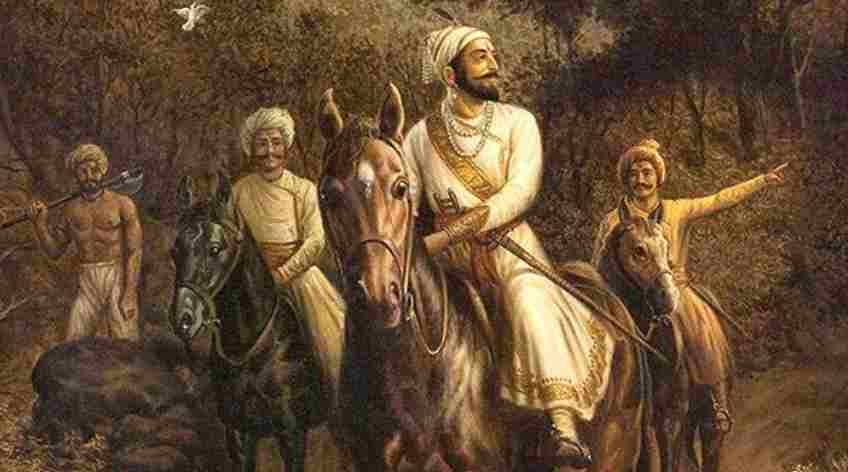Hello there,
In my 22 Ideas from 2022 piece, I promised to dive deeper into Indian history- specifically the period when the Maratha Empire rose to mastery over the Indian subcontinent after destroying the Mughals.
This was a fascinating period of anarchy, chaos, rising indigenous powers, and major wars.
It saw an ultimate showdown between the Mughals and the Marathas, while foreign powers began increasingly meddling in our affairs.
It resulted in the stratospheric rise of Maratha power, which ultimately led to a final, climactic showdown between the Marathas and the British across 3 major wars from 1775-1818. The unfortunate result led to the latter wresting control of most parts of the Indian subcontinent from the former.
Having read more about the tumultuous 1700s (there’s always 100x more to learn), I gleaned some high-level lessons on warfare, psychology, and strategy.
Here are 7 key ideas to ponder over:
Never fight on two fronts: The Marathas had always been at war with Siddies of Janjira (called ‘Murud Janjira’ today). Sambhaji Maharaj, despite the approach of a 20 km long Mughal war machine that was hell-bent on destroying the Maratha threat once and for all, focused on fighting against the Siddies in the West. Waging war on 2 fronts turned out to be a disastrous decision, splitting focus and resources, and weakening his forces. Though he fought bravely, the campaign culminated in his capture and torturous death at the hands of the Mughals. Following this, the 2 sides descended into a brutal, almost 3-decade-long war.
Wars come down to technology: When the Portuguese came, they fought with guns against men who wielded spears- and it was an absolute bloodbath that allowed them to take over. Their control of India’s western coast also came about thanks to superior naval technology. At the Battle of Adyar in 1746, a few hundred French soldiers with artillery and muskets defeated a Mughal force of 10,000. The writing was on the wall- the force with superior tech held a decisive advantage, which became many local forces' undoing.
Take engagements on your terms: Kanhoji Angrey, the grand admiral of the Maratha navy, was painfully aware of the immensely superior naval technology possessed by the British. Thus, all his naval engagements were taken close to the shore with the support of coastal guns and in a way that his ships could attack and easily escape. Angrey realized that in the face of a technological gap, his superior leadership would have to carry the day- and he smartly fought only when the conditions were favorable. With his strategic thinking, Angrey managed to dominate the Konkan waters for decades, handing the Brits and Portugues many defeats.
Know when to stop: Aurangzeb, in a bid to crush the Marathas totally, shifted his base to Aurangabad. But no sooner than he’d conquer one fort and turn that it’d fall back into the Maratha's hands. This was a recurring trend in the tiring 27-year war, and he lost 3 of his queens during his frustrating stay in the Deccan. Despite making no progress and the pleas of his advisors to seek an alliance, Aurangzeb continued to wage a pointless war until it broke him and he died a depressed man, lamenting how these wars had made him toil till his last breath. He had known not when to stop, and it ultimately broke his back.
Sometimes you win simply by not losing: Despite being heavily outnumbered and having a fraction of the Mughal resources and materiel, the Marathas were able to prevail. Even more mindblowing is the fact that they did so without a leader for a long time. As the Mughal lines stretched, and even hard-fought victories were reversed, it tired Aurganzeb and sowed dissension and tedium among the troops who lost their will to fight against this hardy enemy. The failure to succeed also created opportunities to take advantage of corrupt Mughal generals who had agendas of their own. In hindsight, the Marathas, just by surviving and tiring their enemy out, created the conditions for eventual victory. The key lesson here is sometimes, even when faced with a daunting foe, you win simply by staying in the game long enough.
Never rely on foreigners: In the 2nd Anglo-Maratha War, Mahadji Scindia, the master of north India, led a fierce army and the war might have gone in any direction. But right before the proceedings began, the British warned all men of their nationality to stop working with the Marathas or they’d be declared traitors. This led to Scindia’s top chiefs deserting the army just before the battle. This is an important reminder for all sovereigns to never outsource critical aspects of military and defense technology to foreign individuals, more so when they belong to the very nationality you’re fighting against.
The larger they are, the harder they fall: Technically, this point goes beyond the 18th century but is nevertheless a fascinating observation. Why did Pune emerge as one of the most significant hotbeds of revolutionary activity against the Raj? It was because the fall of the Marathas was the hardest, going from being masters of India to falling under British rule. As a British historian noted, “For others, we were a change of masters; them we brought down from masters to slaves”. No wonder the Punekars never forgot the pain and worked endlessly to bring down the Raj.
Thanks for tuning in! If you liked this, you’d also enjoy reading:




